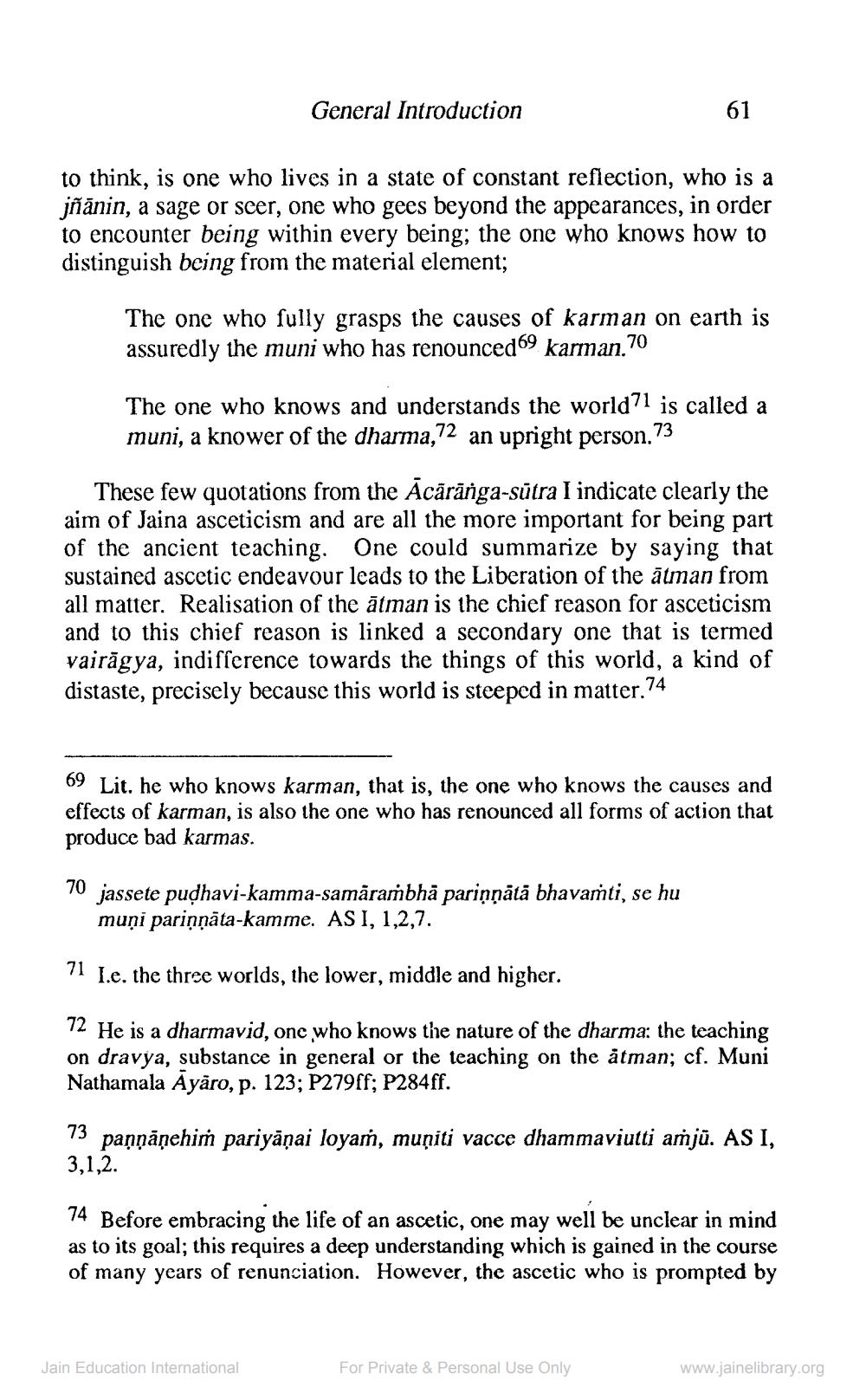________________
General Introduction
61
to think, is one who lives in a state of constant reflection, who is a jñānin, a sage or seer, one who gees beyond the appearances, in order to encounter being within every being; the one who knows how to distinguish being from the material element;
The one who fully grasps the causes of karman on earth is assuredly the muni who has renounced 69 karman.70
The one who knows and understands the world71 is called a muni, a knower of the dharma,72 an upright person.73
These few quotations from the Ācārārga-sūtra I indicate clearly the aim of Jaina asceticism and are all the more important for being part of the ancient teaching. One could summarize by saying that sustained ascetic endeavour leads to the Liberation of the ātman from all matter. Realisation of the ātman is the chief reason for asceticism and to this chief reason is linked a secondary one that is termed vairāgya, indifference towards the things of this world, a kind of distaste, precisely because this world is steeped in matter. 74
69 Lit. he who knows karman, that is, the one who knows the causes and effects of karman, is also the one who has renounced all forms of action that produce bad karmas.
70 jassete pudhavi-kamma-samārambha parinnātā bhavasti, se hu
muņi pariņņāta-kamme. AS I, 1,2,7.
71 I.e. the three worlds, the lower, middle and higher.
72 He is a dharmavid, one who knows the nature of the dharma: the teaching on dravýa, substance in general or the teaching on the atman; cf. Muni Nathamala Ayāro, p. 123; P279ff; P284ff.
73 paņņāņehiṁ pariyāņai loyaṁ, muniti vacce dhammaviutti amju. AS I, 3,1,2.
74 Before embracing the life of an ascetic, one may well be unclear in mind as to its goal; this requires a deep understanding which is gained in the course of many years of renunciation. However, the ascetic who is prompted by
Jain Education International
For Private & Personal Use Only
www.jainelibrary.org




